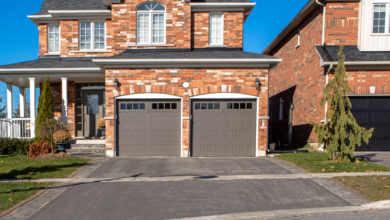Tips on Maintaining Your Residential Drainage System
To avoid the likelihood of water damage, flooding, and other issues that involve large expenses, it is paramount that the residential drainage system is operating properly all the time. In the same way, the proper functioning of gutters and downspouts is also too important at this stage.
Once the wastewater reaches septic tanks and drain fields, these components take part in the process which protects your property from flooding. Here in this article, we will discuss in detail how to keep your drainage system in residential areas clean and healthy. To learn more in detail, stick with us till the end.
1. Keep Gutters and Downspouts Clear
One of the most important steps associated with Cleaning up leaves, twigs, and other debris from gutters and downspouts. As it will save residential drainage systems from blockages and unnecessary repairs by keeping them free. Gutters and downspout clogs are common, which yield roof, siding, and foundation damages to your property. Regular removal of leaves or twigs from gutters encourages the free flow of water away from your home. Gutter guards should be considered when trying to stop debris from clogging the gutters and ease the whole maintenance process.
2. Maintain Proper Grading Around Your Home
Proper grading around your home is essential for directing water away from the foundation and preventing basement flooding. A good drainage out of your house is the primary one to move water away from the foundation. It is necessary to avoid basement flooding. Ensure that the ground slopes away from your home’s foundation at a minimum grade of one inch per foot for the first six feet. Fill in low spots to divert water away from vulnerable areas. Conduct routine grading inspections around your house, and keep making new adjustments as required to maintain proper drainage.
3. Schedule Regular Septic Tank Maintenance
Septic tank maintenance should be viewed as essential in the overall plan of the residential wastewater system. The key components of proper maintenance of septic tanks include periodic pumping, Septic tank system maintenance, and cleaning to avoid expensive fixes.
Following a schedule, every three to five years unless the professional septic system licensing board recommends a different time frame, schedule professional septic tank pumping. Therefore, the process filters out physical contaminants and guarantees the normal functioning of your septic tank. Hence, protecting the surrounding drain field and the environment.
4. Monitor and Address Drainage Issues Promptly
To prevent problems ahead of time you need to be proactive in inspecting residential drainage systems for indications of trouble such as standing water, slow drains, or unpleasant smells. These might tell about the drawbacks of your guttering, outtakes, or septic tank systems that must be paid off. Effective drain provisions are a first-rate solution against worsening flooding events and high costs of rectification.
One way of doing this is by involving a certified drainage contractor to evaluate your system and draft a plan to deal with your drainage issues. Consequently, this will ensure high caliber and long-term assistance.



